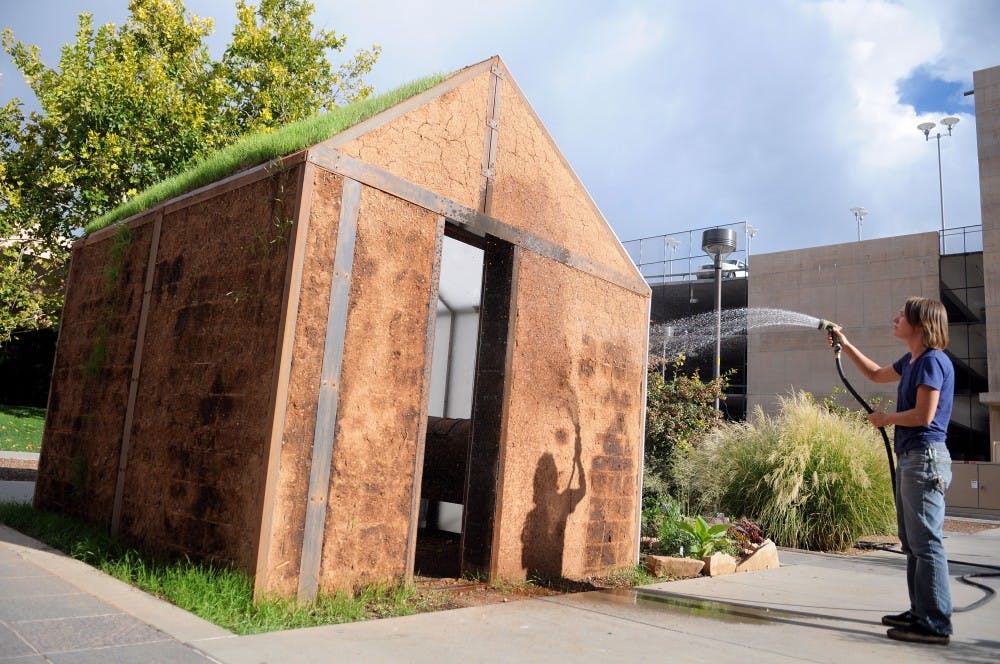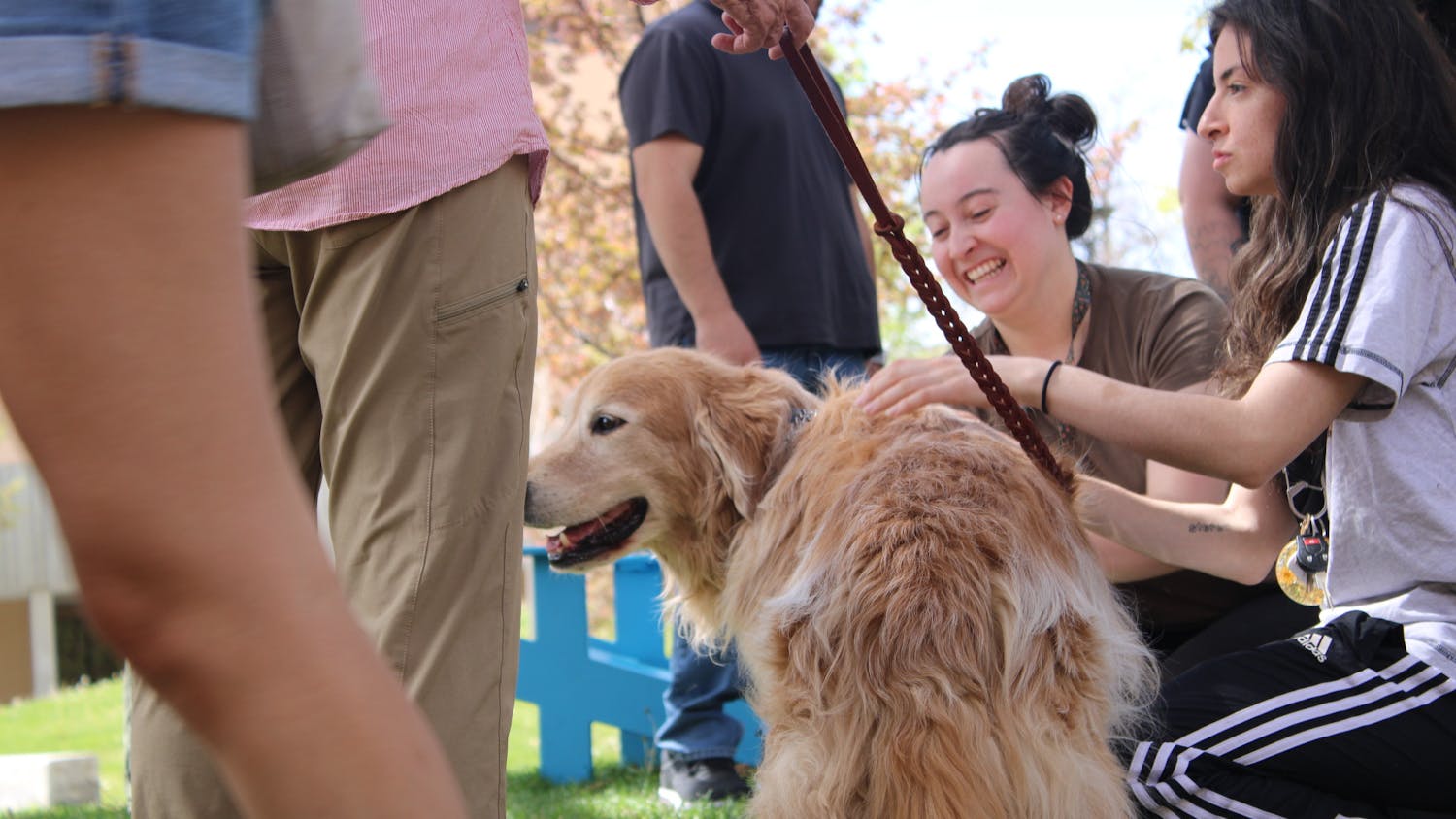If you’ve walked passed Johnson Center recently, you may have noticed a little shack covered in soil, with grass growing out of its side walls and roof. This “earth house” is titled Culture Digest(e).
The house is part of a program culminating in an exhibit showing at the UNM Art Museum called “Land Arts of the American West.”
Nina Dubois and Jeanette Hart-Mann created the “on-site, passive solar greenhouse.” They want to catch people’s attention, using attractive photographs of the waste, Dubois said.
The structure serves two important functions, Dubois said. It stores waste such as food, paper and landscape debris collected on campus in a revolving composter, and it provides a place to photograph the compost for artistic use. Artists paint still lifes from the photos, and the pieces are displayed at the museum.
“The structure is a facility where we take all of these objects we find on campus and store them there temporarily, long enough to make the still-life photographs, and then we compost them in the garden outside the structure or further into the community,” Dubois said. “We have a garden outside the structure, symbolically saying all this material can be turned back into soil which supports life.”
The garden is filled with medicinal plants and edible vegetation, such as squash, corn, yarrow and sunflowers.
Both Dubois and Hart-Mann are former UNM students who participated in the “Land Arts of the American West” program. It is offered through the Art and Art History department in the fall semester.
“Land Arts of the American West” is UNM’s contribution to LAND/ART, a state-wide art project that explores the relationship between land and art exhibited throughout the state.
516 Arts, a non-profit arts venue on Central Avenue, is the headquarters for LAND/ART.
Francesca Searer, program coordinator of 516 Arts, said she is happy to see artists using UNM’s leftovers as art.
“I think it is a pretty awesome thing they are involved in at UNM, because massive amounts of people produce large amounts of waste,” Searer said. “It is pretty phenomenal to use it as an example to bring awareness.”
Bill Gilbert, director of the Land Arts of the American West program, said it is an experiment in pedagogy. Participants, including students, faculty and guest artists, travel through five southwestern states and live in often unforgiving climates for as long as 50 days. They visit many historically significant and modern “land art” sites, including Chaco Canyon and the Lightning Field.
Get content from The Daily Lobo delivered to your inbox
Hart-Mann and Gilbert are traveling with the class.
Dubois said she is interested in ecological surroundings, architecture and the process of food and energy systems and how they relate to the culture that surrounds them.
“The project was an experiment,” she said. “We both completed the program and got involved in farming, and this collaboration was a first attempt for either of us to really integrate that part of life into art making. … We realize that things being thrown out and removed from campus is something we don’t really see and because we don’t see it, we don’t think about it.”
Susan Kugelmann, a volunteer at the Art Museum, said this exhibit is one of a kind and something students and faculty will enjoy learning about.
“I think it’s a cool show because it’s earth conscious and bringing awareness to producing art that is part of the environment and not harmful and gives awareness to environmental issues,” Kugelmann said.
Steven Hurley, the curatorial assistant at the museum, said the exhibit is unique because there are interactive elements where visitor participation is encouraged. Students can check out artistic boxes with ceramic objects inside, such as brains, hearts and bowls. They can paint them and then bring them back to the museum
for display.
On Tuesdays, visitors can eat bread and jam in the piece entitled “Bread and Jam” by Jen Van Horn. The Land Arts exhibition creatively addresses an array of issues, including the issue of what to do with waste.
“Land Arts of the American West”
UNM Art Museum next to Popejoy Hall
Showing through Dec. 20
unmartmuseum.unm.edu






